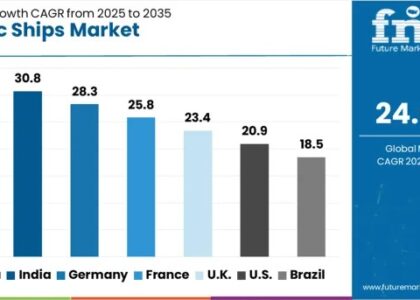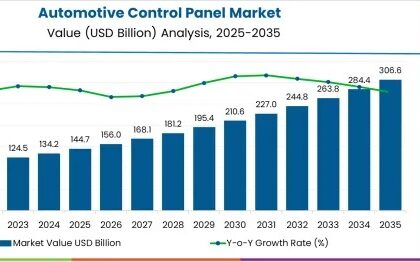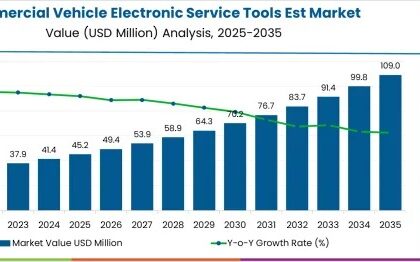
Direct-to-Garment (DTG) printing is a modern digital printing technique that allows for the direct application of full-color, high-resolution designs or images onto garments, textiles, and fabrics. It has gained popularity for its ability to produce detailed and vibrant prints on a variety of fabrics.
With a notable compound annual growth rate (CAGR) of 8.3% expected between 2022 and 2032, the global direct-to-garment printing market is set to witness remarkable expansion, surging from a valuation of US$ 822.1 million in 2022 to an impressive US$ 1,820.1 million.
The growing prominence of digital printing within the apparel industry is poised to become a pivotal driver behind the expansion of the direct-to-garment printing market. Additionally, the contemporary consumer preference for vibrant and unconventional clothing choices is expected to provide significant impetus to the direct-to-garment printing industry, propelling it to new heights.
Direct-to-garment (DTG) printing is witnessing a surge in demand due to its unique ability to print on garments that present challenges for other printing techniques. It offers the added advantage of being able to swiftly reproduce intricate images, regardless of their complexity. However, the anticipated growth of the direct to garment printing market may face a decelerated pace due to a shortage of skilled and qualified operators.
Get Exclusive Sample Copy of the Report: https://www.futuremarketinsights.com/reports/sample/rep-gb-11367
Key aspects related to direct-to-garment printing:
- Printing Process: DTG printing involves using specialized inkjet printers that are designed to print directly onto fabrics. These printers can handle detailed and complex designs, producing high-quality images with fine details.
- Ink Types: Water-based textile inks are commonly used in DTG printing. These inks are formulated to bond with the fibers of the fabric, resulting in durable and wash-resistant prints. Some printers may use eco-friendly or water-based pigments.
- Fabric Compatibility: DTG printing is suitable for a wide range of fabrics, including cotton, polyester blends, and certain types of blends. The technique is especially effective on light-colored fabrics, although advancements have been made to improve results on darker fabrics.
- Design Flexibility: One of the main advantages of DTG printing is its ability to reproduce intricate and colorful designs accurately. This makes it suitable for creating custom and personalized garments, as well as reproducing detailed artwork.
- Short Production Runs: DTG printing is well-suited for small to medium production runs. It is cost-effective for producing limited quantities of custom garments, making it a popular choice for on-demand printing.
Market Growth Factors
Growing fascination with sustainable printing methods
Fabric printing remains a dynamic industry, constantly embracing new technologies.
Enhanced adaptability within the fashion sector
Digital apparel printing offers advantages such as reduced production expenses.
Surge in online apparel sales.
Request Report Methodology: https://www.futuremarketinsights.com/request-report-methodology/rep-gb-11367
Drivers Surging the Demand
The growing global enthusiasm for stylish and vibrant apparel is expected to drive an increasing demand for direct-to-garment printing. Furthermore, the integration of these machines offers an opportunity for heightened automation, rendering the necessity for human resources in traditional screen printing facilities obsolete.
Textile screen printing enterprises across the globe continually seek avenues to bolster their profitability by reducing expenses and elevating print quality. In this context, the direct to garment approach stands out by substantially lowering operational costs through reduced resource utilization while delivering remarkable quality and precision in print outcomes. This transformation is propelling the rapid growth of the direct to garment printing market.
Key Market Players:
- Mimaki Engineering Co. Ltd.
- ROQ International
- Sawgrass Technologies Inc.
- Seiko Epson Corporation
- The M&R Companies
- Durst Group
- Aeoon Technologies GMBH
- ColDesi Inc.
- Scalable Press
- Print Aura
- Contract DTG
- MKK Textile Co. Ltd.
- HGS Machines Pvt. Ltd.
Key Segments Profiled in the Direct to Garment Printing Market Survey
By Printer Type:
- Industrial DTG Inkjet Printers
- Desktop DTG Inkjet Printers
By Ink:
- Reactive
- Acid
- Disperse
- Pigment
By Substrate:
- Cotton
- Silk
- Rayon
- Linen
- Polyester
- Polyamide
By End User:
- Clothing & Apparels
- Household
- Technical Textiles
By Region:
- North America
- Latin America
- Asia Pacific
- MEA
- Europe
About Future Market Insights (FMI)
Future Market Insights, Inc. (ESOMAR certified, recipient of the Stevie Award, and a member of the Greater New York Chamber of Commerce) offers profound insights into the driving factors that are boosting demand in the market. FMI stands as the leading global provider of market intelligence, advisory services, consulting, and events for the Packaging, Food and Beverage, Consumer Technology, Healthcare, Industrial, and Chemicals markets. With a vast team of over 5000 analysts worldwide, FMI provides global, regional, and local expertise on diverse domains and industry trends across more than 110 countries.
Contact Us:
Future Market Insights Inc.
Christiana Corporate, 200 Continental Drive,
Suite 401, Newark, Delaware – 19713, USA
T: +1-845-579-5705
For Sales Enquiries: sales@futuremarketinsights.com
Website: https://www.futuremarketinsights.com
LinkedIn| Twitter| Blogs | YouTube





